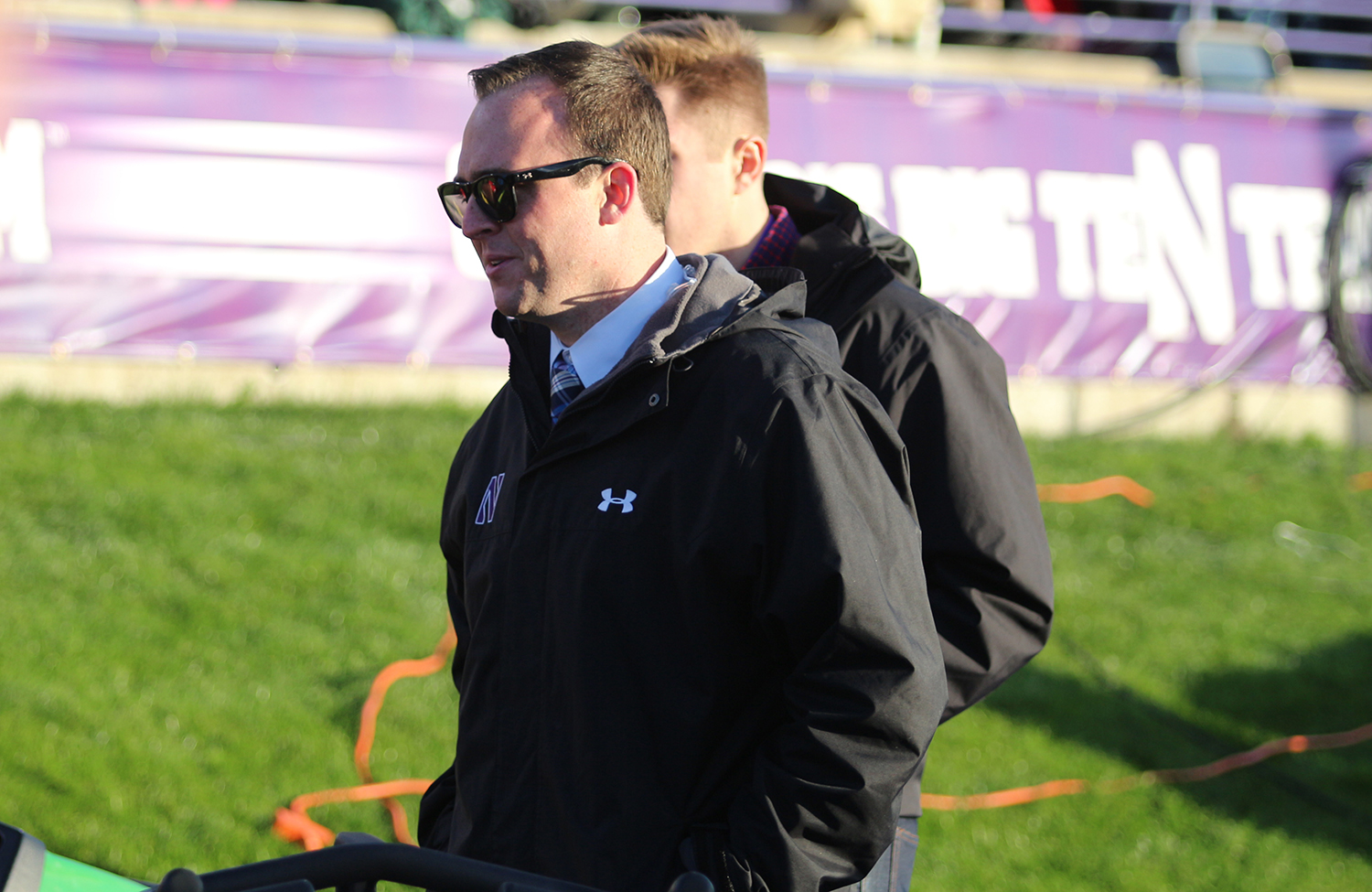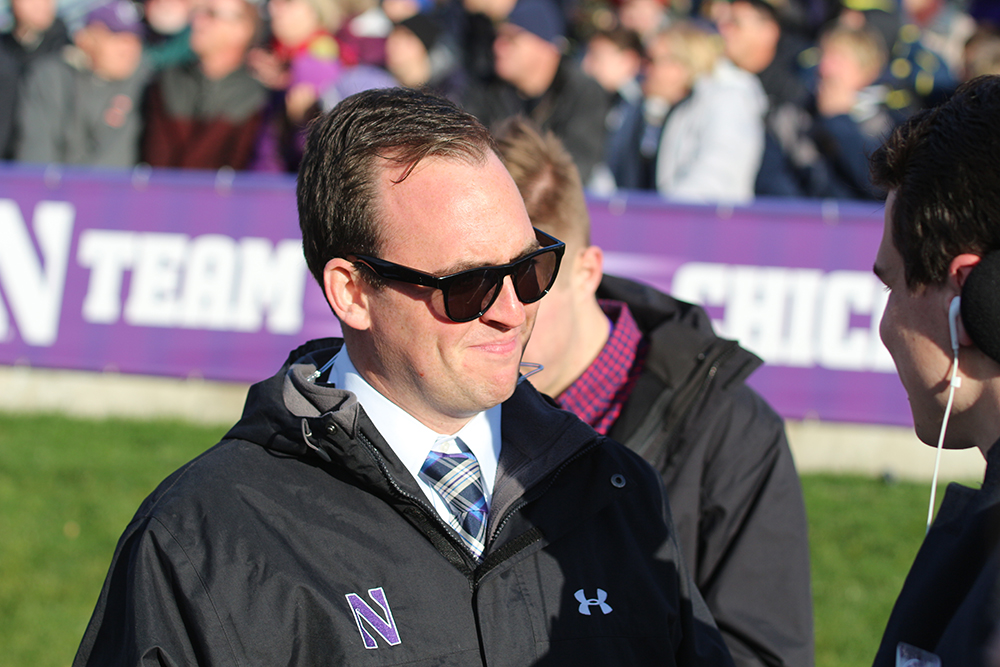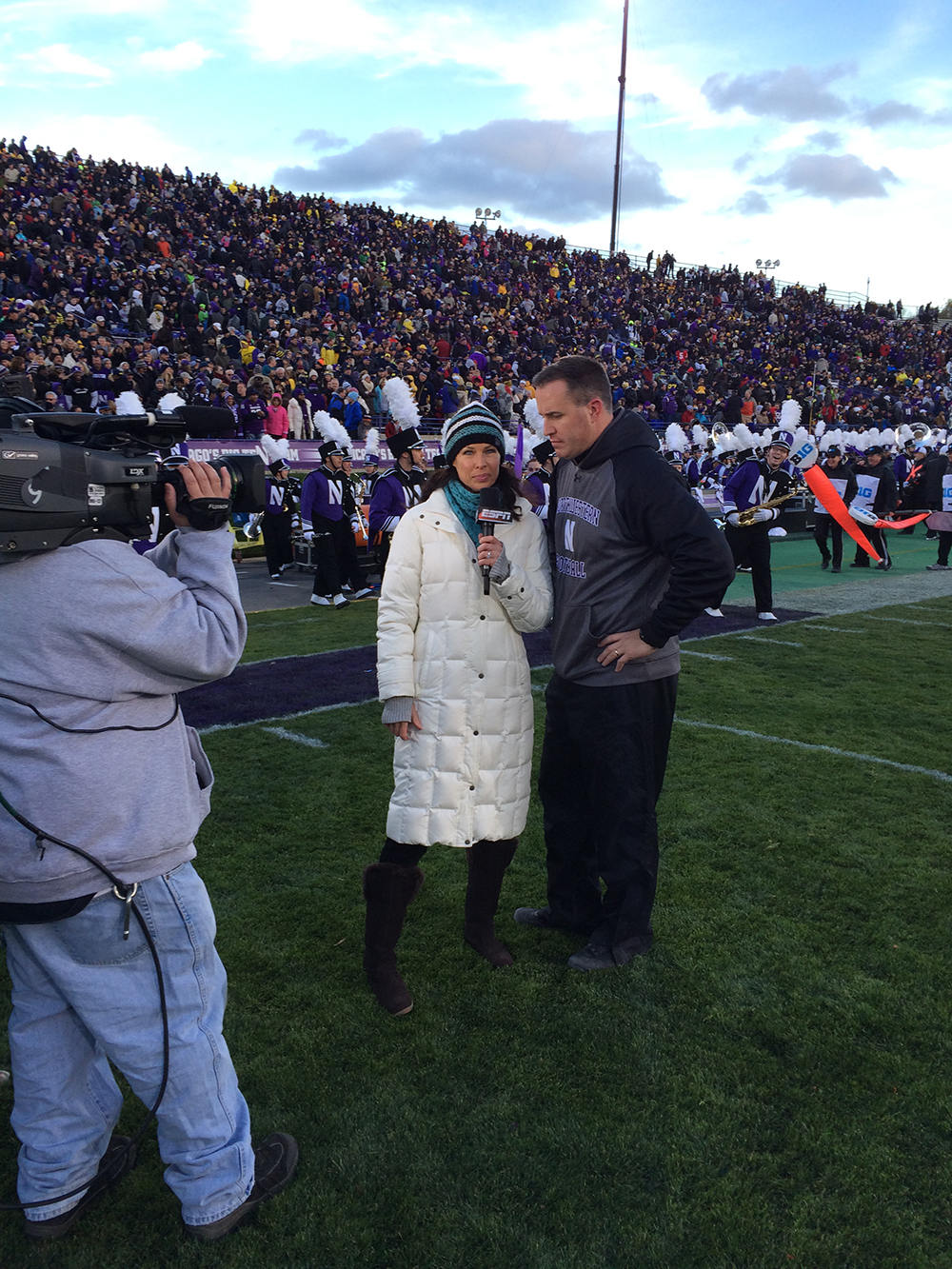He's the man in charge
The sideline of an NCAA football game is pure bedlam. Between the TV production personnel, football players, journalists, special guests and photographers, it can get pretty cramped. This game was especially chaotic because it was broadcasted on ESPN 2, meaning a whole other dimension of media activity was added to the sideline.
In addition to what normal television crews have for a game, ESPN brings in sideline reporters and many additional HD cameras. For any football game being shown on the ESPN family of networks, the level of activity increases. But against Michigan, and for just about every other game, the media circus that is the sideline of a Big Ten game is surprisingly uneventful and works smoothly.
Between the camera truck that drives up and down the sideline (often almost running over people in the process) to get good TV shots of every play and other TV crews that carry hundreds of feet of wires, hundreds of other people jockey for a good spot to watch the game.
“It really is a miracle how no one complains because there are a ton of people on the sidelines,” sophomore Zack Becker, who shoots photography for Northwestern News Network from the sideline, said. “Especially with ESPN, everything was so busy. Wires were everywhere.”
Aside from the media, there is a whole other dimension to the sideline environment. Cheerleaders face the fans, leading them in cheers for the ‘Cats. High school recruits often come, chauffeured by athletic department staff, to watch the game up close and personal.
But, that isn’t even close to the end of it. Team managers from both teams sprint around the field to make sure the players are properly cared for, emergency medical staff remains on standby and Big Ten officials patrol the sidelines in case they are needed.
The Big Ten conference uses people – often students – to hold four parabolic microphones around the field in order to add audio snippets of the game to their broadcast. For some games, Becker is one of those students.
“I had seen them do that on the sidelines plenty of times in person and on TV,” he said. “But, I never really had any idea what it actually did until I put on the headset and I could hear absolutely everything I pointed the mic at.”
Even more, many special university guests come down to the field, too. And because Medill produces so many student publications, many student journalists do sideline reports or shoot photos from the side of the field.
In order to make sure all this controlled chaos runs smoothly, precautions have to be taken. Before the game, representatives from many of the parties are responsible for managing the game all meet to discuss the plan. That meeting, called the “100-minute meeting,” is attended by about 20 people (for more details, see “The SID”) who discuss potential dangers, which often have to do with weather.
Despite hundreds of people and machines and wires racing along the field for the whole game, everything goes to plan against Michigan. There are no miscues (besides the ones made by the players), and everything runs smoothly – everyone did their job correctly.
The obsession with football is almost unreal. Every inch of the stadium has been accounted for, either by media members or stadium staffers. Dozens of media outlets cover this game, each sending multiple people to report or photograph or video the game. All of this for a meeting between two below-.500 football teams.
And some people still call baseball “America’s pastime.”



